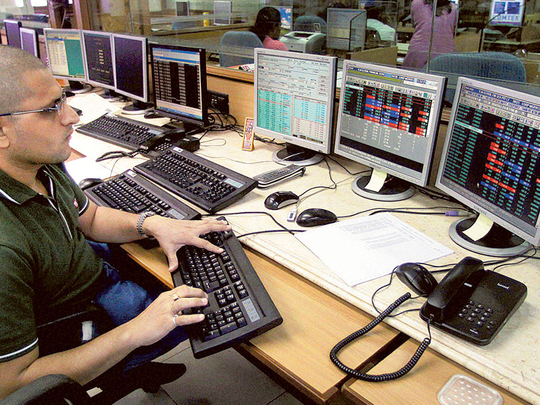
Dubai: Despite gaining 27 per cent since April last year, Indian equities are still reasonably and attractively priced at current levels, Sukumar Rajah, managing director and chief investment officer of Franklin Asian Equities told Gulf News.
The Indian benchmark Sensex has been the one of the best performing markets in the world as investors bet on high growth after the new government took office, ending months of pessimism left behind by the previous government from policy paralysis to a record high current account deficit.
“We feel that the market is reasonably and attractively priced at current levels because of margin expansion, and if structural reforms works well, then the growth process will start and the PE [price to earnings] ratio for markets would also expand,” said Rajah, who oversees the India fund worth $9 billion (Dh33.1 billion).
“Right now, even without the PE ratio expanding, we think Indian stocks could deliver fairly good returns over the next 3-5 years, If there are structural reforms takes the growth level higher and PE multiple expand structurally, then the returns would be even better,” Rajah said.
Indian equities have done fairly well so far, a smart recovery from after depressed sentiment before the new government came to power. “The PE multiple of the market is close to the long term average but the point before the elections, the market was trading much below the long-term average due to concerns on growth and current account deficit and variety of macro economic factors,” he said.
Drivers
From a short to medium term perspective, analysts expect macro economic parameters like easing current account deficit (CAD), and inflation along with high growth could be the key drivers for markets.
Rajah expects CAD may come in at less than 2 per cent of gross domestic product (GDP) from 5 per cent a couple of years ago. Inflation may ease to normal rate of 4-6 per cent. Fiscal deficit may also come to less than 4 per cent, looking at the government measures. “Macro economic parameters would look reasonably healthy from 2016 onwards,” Rajah said.
The other part of the cyclical recovery, Rajah feels, would be earnings coming to normal levels. In the last few years, earnings growth had been in mainly in single digit due to high cost of production in the backdrop of high interest rates, from 15 per cent in the past 20 years.
“In 2015 and 2016, we expect a gradual pickup in earnings growth, which has been slightly delayed for various reasons. There would be a meaningful pick up in margins and consequently earnings growth,” Rajah said.
“Continued improvement in the growth environment is something which could drive markets much higher for that we are looking at GDP, which could go beyond 7-8 per cent, that would trickle down the structural reforms in terms of keeping the deficit low in terms of investing in infrastructure,” Rajah said.
Initiatives
The federal government has also been proactive in many reform process, including the coal sector, along with some success with the land acquisition bill along with reduction in subsidies in certain areas, which could potentially help in reducing the fiscal deficit.
The reform process would bear fruit in another 2-3 years. These reforms would have more impact on growth after 2017, he said.
As the economy and the government delivers on these parameters, the next leg of big returns might be seen. Recovery from pessimism, and cyclical recovery and final stage would be market believes that reforms would be successful, he said.
For the next one year, the proof of cyclical recovery would be the main driver, for the next 3 years, proof of successful reforms would the next key driver, he said.
Selective on stocks
“We focus on stock selection than sector selection, historically 70 per cent of our outperformance has been due to stock selection. Franklin Templeton focuses on earnings growth, asset quality and sustainability,” Rajah said.
Due to stock selection, Franklin Templeton is able to give alpha returns compared to the benchmark indices. “The current range of products are diversified enough to fulfil our clients needs. We would stay disciplined and would like to launch the product only if it is truly differentiated to the products that we have and also we have confidence that strategy would be able to sustain the performance over a period of time,” Rajah added.
Monetary tightening by US
Despite monetary tightening by the US, India would be one of the markets that would least impacted because interest rates locally are expected to go down in the next couple of years.
“Inflation is continuously coming down in India and there is a room for further cuts in the next 18 months. The second factor is Indian companies are not very big borrowers in the overseas markets, and US-denominated loans are not very high on the books of Indian companies. Even if the US rates goes up it would not impact banks or corporate sector in a meaningful manner,” he added.
However, risks still persists for India, which imports all of its oil requirements.
Even if crude oil goes back to $80-90 per barrel, it won’t throw the Indian growth story out of gear. But if crude oil prices jumps more than $100, there could be some risks, Rajah cautions.






